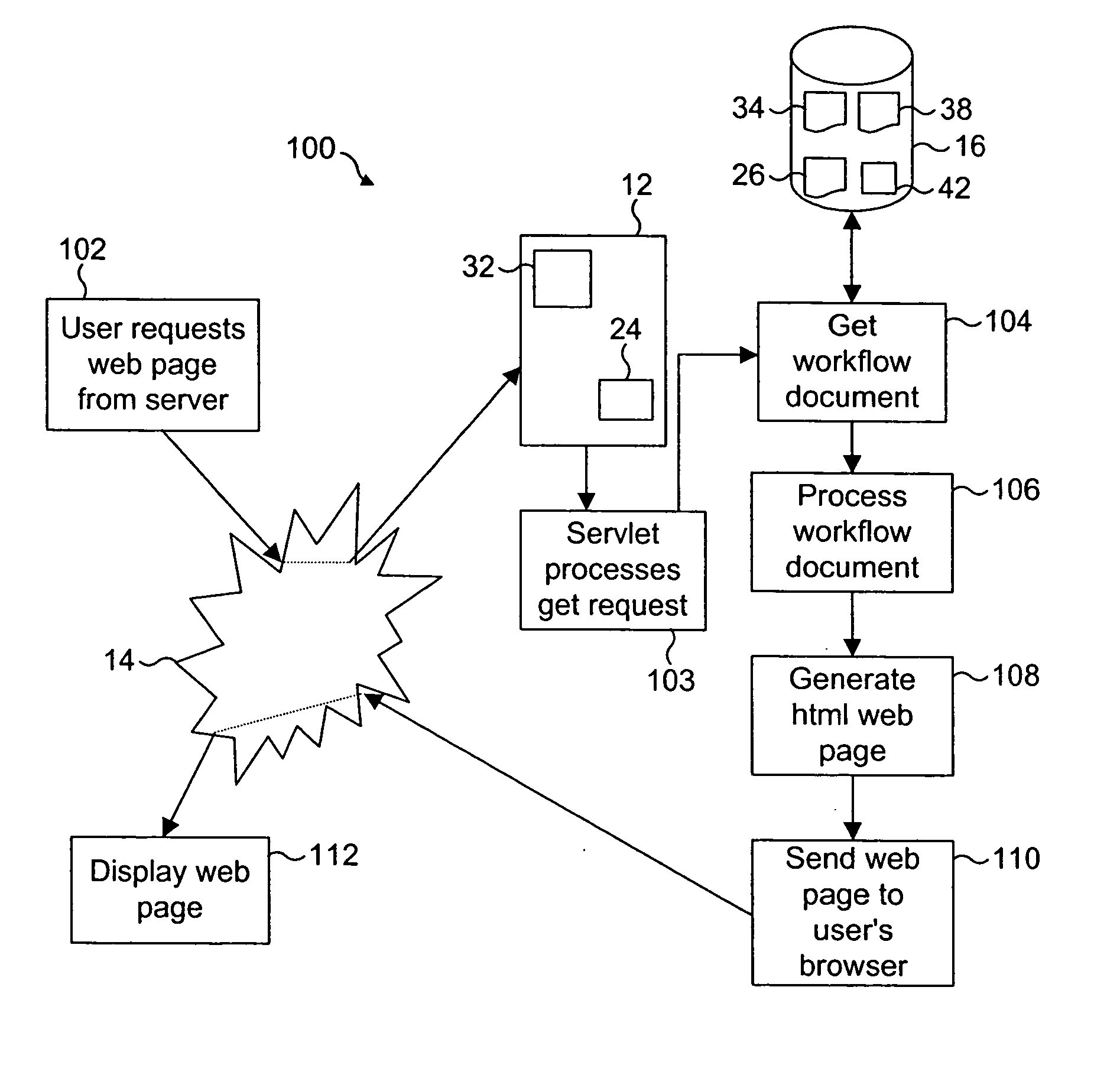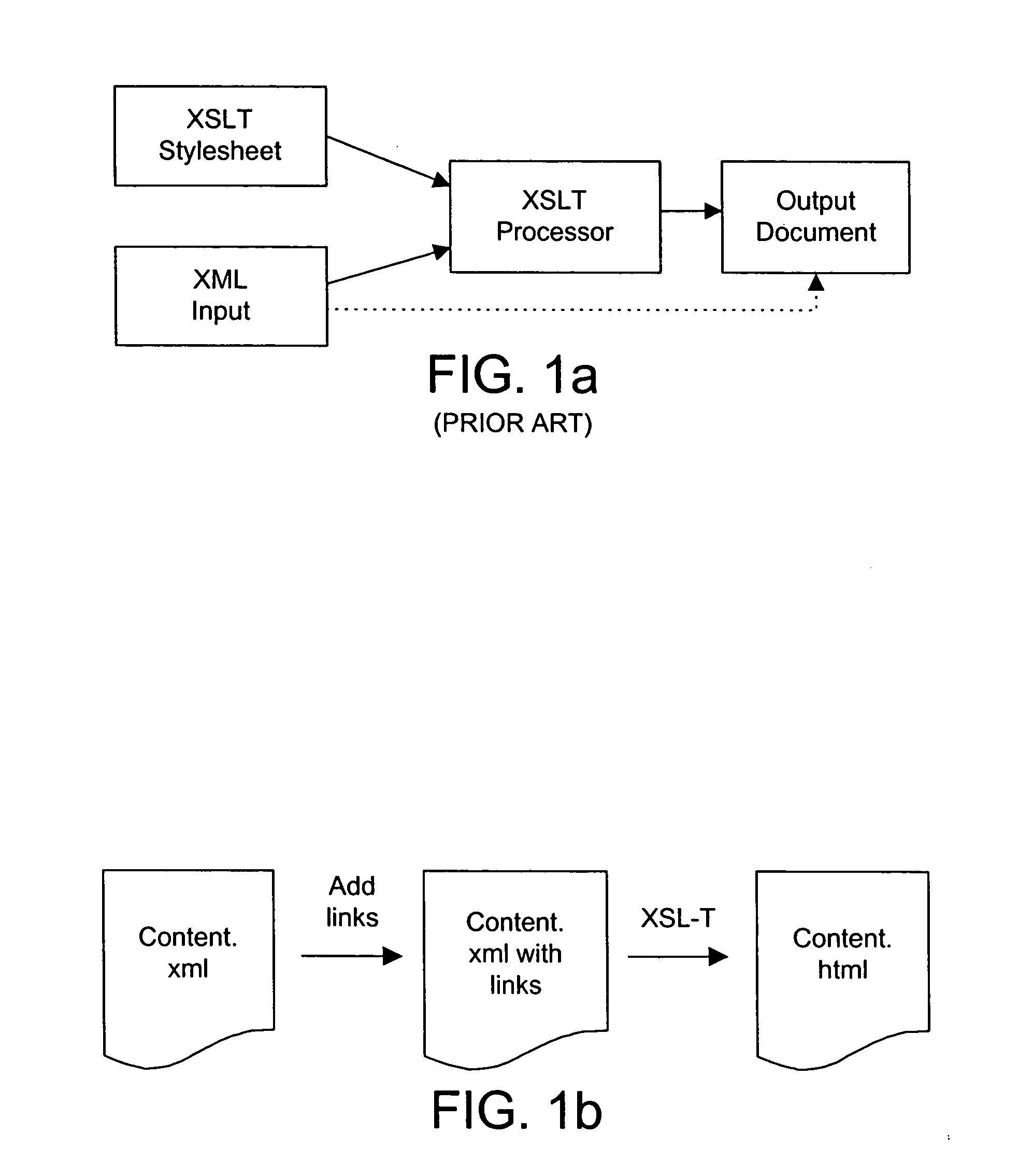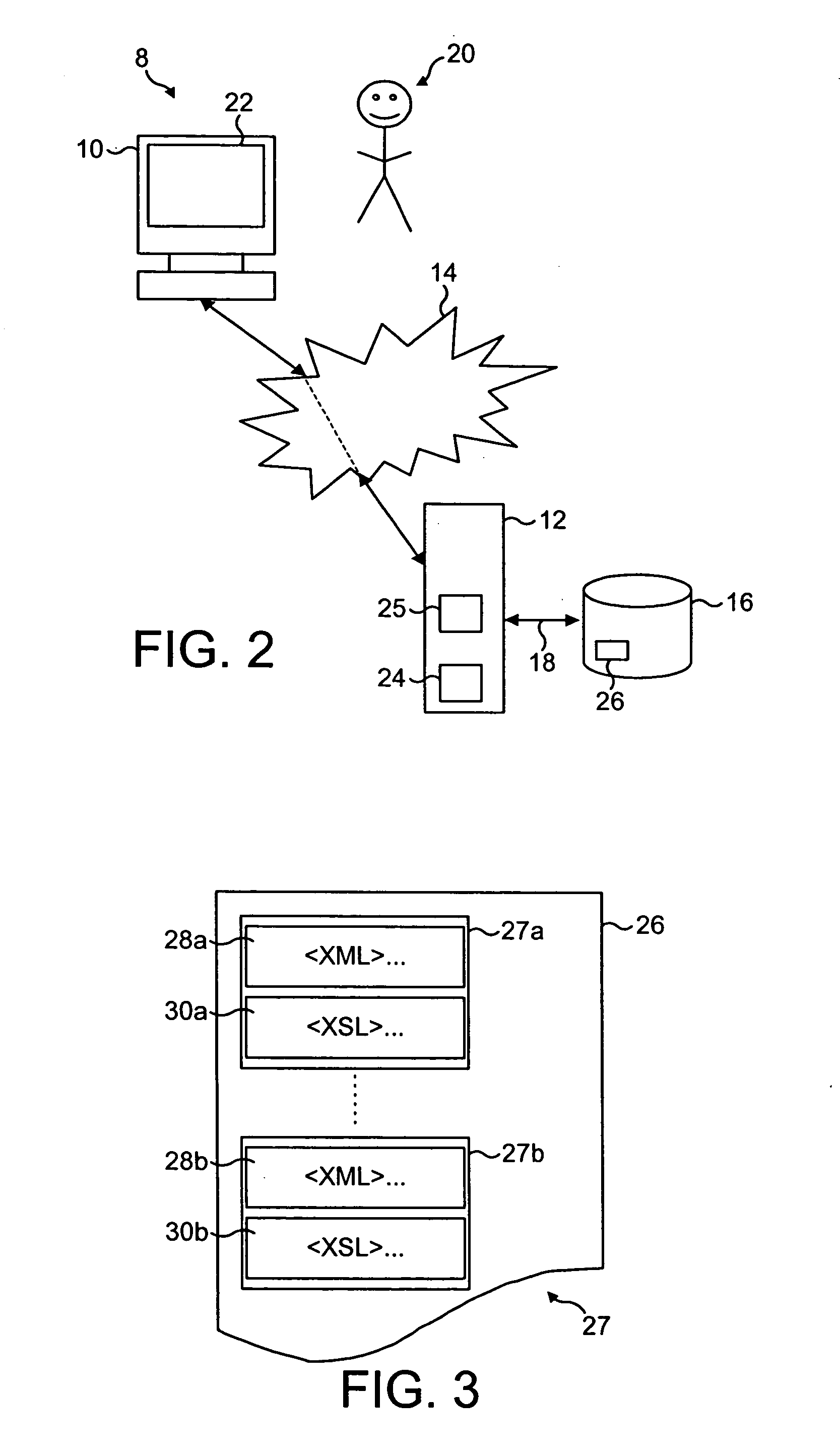Document generation
- Summary
- Abstract
- Description
- Claims
- Application Information
AI Technical Summary
Benefits of technology
Problems solved by technology
Method used
Image
Examples
Embodiment Construction
[0076] Referring to FIG. 2 there is shown a client-server system 8 known in the prior art which is suitable for implementing the invention. The client-server system 8 comprises a client computer 10 which is connected to a server computer 12 via the Internet 14. The server 12 is optionally connected to a database 16 by way of a further connection 18. The arrows in FIG. 2 indicate that data can be exchanged in both directions between the client computer 10 and the server 12, and between the server 12 and the database 16. In order to enable a user 20 to navigate through the Internet to different servers and Web sites, the client computer 10 has an Internet or Web browser 22 provided. At the server side of the system 8, a servlet 24 running on the Web server 12 is provided, together with a workflow processor 25.
[0077] With reference to FIG. 3 of the drawings, there is shown a schematic diagram of a document 26 which is known as a "workflow document". Only the outline structure of the wo...
PUM
 Login to View More
Login to View More Abstract
Description
Claims
Application Information
 Login to View More
Login to View More - R&D
- Intellectual Property
- Life Sciences
- Materials
- Tech Scout
- Unparalleled Data Quality
- Higher Quality Content
- 60% Fewer Hallucinations
Browse by: Latest US Patents, China's latest patents, Technical Efficacy Thesaurus, Application Domain, Technology Topic, Popular Technical Reports.
© 2025 PatSnap. All rights reserved.Legal|Privacy policy|Modern Slavery Act Transparency Statement|Sitemap|About US| Contact US: help@patsnap.com



